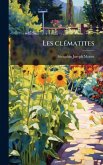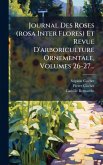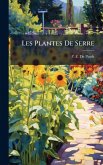Les plantes à feuillage coloré is a detailed historical guide to cultivating and utilizing plants with colored foliage for decorative purposes. Authored by E.J. Lowe and W. Howard, and introduced by Charles Naudin, this work provides comprehensive information on the history, description, cultivation, and uses of the most remarkable species suitable for decorating parks, gardens, greenhouses, and apartments. Originally published in 1867, this book offers insights into the horticultural practices and aesthetic preferences of the time, making it a valuable resource for gardeners, historians, and anyone interested in the evolution of garden design and ornamental plants. This work has been selected by scholars as being culturally important, and is part of the knowledge base of civilization as we know it. This work was reproduced from the original artifact, and remains as true to the original work as possible. Therefore, you will see the original copyright references, library stamps (as most of these works have been housed in our most important libraries around the world), and other notations in the work. This work is in the public domain in the United States of America, and possibly other nations. Within the United States, you may freely copy and distribute this work, as no entity (individual or corporate) has a copyright on the body of the work. As a reproduction of a historical artifact, this work may contain missing or blurred pages, poor pictures, errant marks, etc. Scholars believe, and we concur, that this work is important enough to be preserved, reproduced, and made generally available to the public. We appreciate your support of the preservation process, and thank you for being an important part of keeping this knowledge alive and relevant.
Bitte wählen Sie Ihr Anliegen aus.
Rechnungen
Retourenschein anfordern
Bestellstatus
Storno








